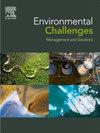哺乳动物粪便中微塑料的研究进展:监测技术和相关挑战
Q2 Environmental Science
引用次数: 0
摘要
全球生态系统正面临着微塑料(MPs)污染迅速升级的问题,这引起了人们对人类接触和潜在健康影响的担忧。这篇综述的重点是哺乳动物粪便中的多聚乳酸污染,并评估当前的监测技术和相关的挑战。在人类中,粪便中发现的最普遍的MP聚合物包括聚对苯二甲酸乙二醇酯(PET)、聚丙烯(PP)、聚乙烯(PE)、聚苯乙烯(PS)、聚酰胺(PA)、聚氯乙烯(PVC)、聚碳酸酯(PC)和聚氨酯(PU)。此外,在狗和猫的粪便中也发现了PET和PC。在斑海豹粪便中,鉴定出的聚合物类型包括玻璃纸、橡胶、醇酸树脂和三元乙丙橡胶。本综述确定人类粪便中MPs的大小在1µm到5000µm之间。人类和其他哺乳动物粪便中多磺酸盐的检测表明,粪便多磺酸盐监测可以作为一种非侵入性生物监测方法来评估暴露水平和加强环境卫生监测。考虑到目前威胁全球生态系统的塑料污染的生物蓄积性,了解生物体中MP摄入的程度至关重要。持续监测几种生物粪便中的MPs有助于确定健康风险,并为旨在减少塑料废物及其相关影响的环境政策提供信息。本文章由计算机程序翻译,如有差异,请以英文原文为准。

A review on microplastics in mammalian feces: Monitoring techniques and associated challenges
The global ecosystem is facing a rapidly escalating contamination issue with microplastics (MPs), which has raised concerns about human exposure and potential health effects. This review focuses on MP contamination in mammalian feces and evaluates current monitoring techniques and associated challenges. In humans, the most prevalent MP polymers identified in human feces include polyethylene terephthalate (PET), polypropylene (PP), polyethylene (PE), polystyrene (PS), polyamide (PA), polyvinyl chloride (PVC), polycarbonate (PC), and polyurethane (PU). Additionally, PET and PC were found in the feces of dogs and cats, too. In harbor seal feces, the identified polymer types included cellophane, rubber, alkyd resin, and ethylene-propylene-diene-monomer (EPDM). This review determined that the size of the MPs in human feces ranged from 1 µm to 5000 µm. The detection of MPs in the feces of humans and other mammals suggests that fecal MP monitoring can be used as a non-invasive biomonitoring approach to assess exposure levels and enhance environmental health surveillance. Understanding the extent of MP ingestion among organisms is crucial, considering the bioaccumulative nature of plastic pollution that currently threatens global ecosystems. Consistent monitoring of MPs in the feces of several organisms can help identify health risks and inform environmental policies aimed at reducing plastic waste and its associated impacts.
求助全文
通过发布文献求助,成功后即可免费获取论文全文。
去求助
来源期刊

Environmental Challenges
Environmental Science-Environmental Engineering
CiteScore
8.00
自引率
0.00%
发文量
249
审稿时长
8 weeks
 求助内容:
求助内容: 应助结果提醒方式:
应助结果提醒方式:


